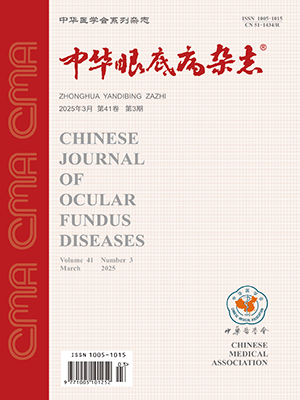Citation: WuZhipeng, CaiShanjun, LyuJianping. The effect of blue light on Ca2+-protein kinase C signaling pathway in human retinal pigment epithelial cells in vitro. Chinese Journal of Ocular Fundus Diseases, 2014, 30(3): 284-288. doi: 10.3760/cma.j.issn.1005-1015.2014.03.014 Copy
Copyright © the editorial department of Chinese Journal of Ocular Fundus Diseases of West China Medical Publisher. All rights reserved
-
Previous Article
Lentivirus mediated small interference RNA targeting cyclic adenosine monophosphate responsive element binding protein 1 suppress retinal neovascularization in mice -
Next Article
Effect of lysophosphatidylcholine acyltransferase-1 deficiency on the murine retinal structure and electroretinograms




